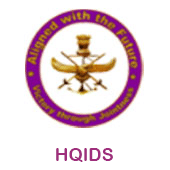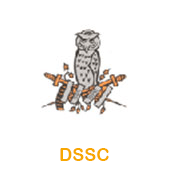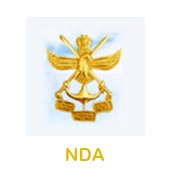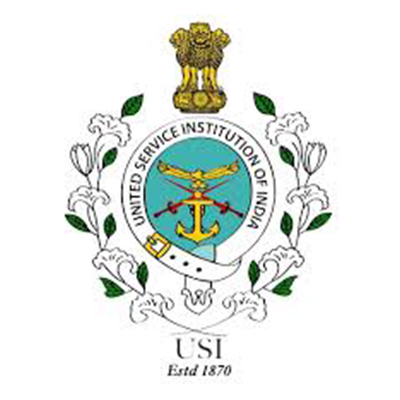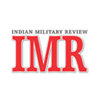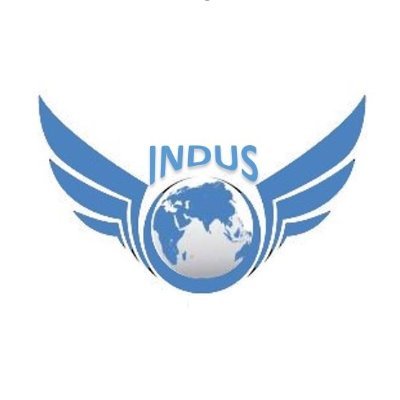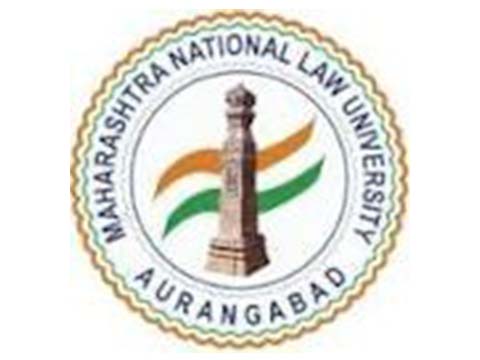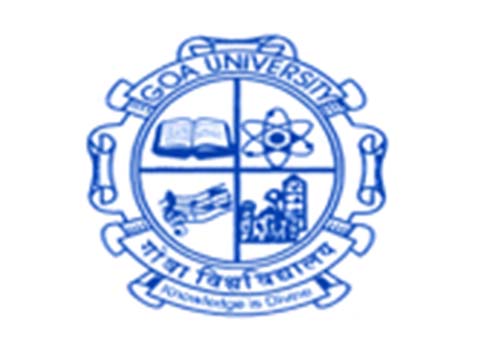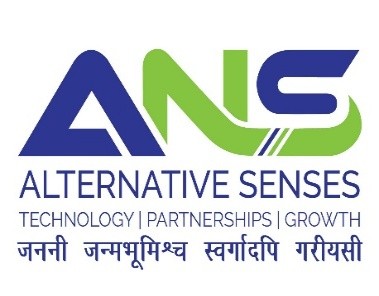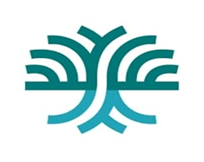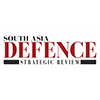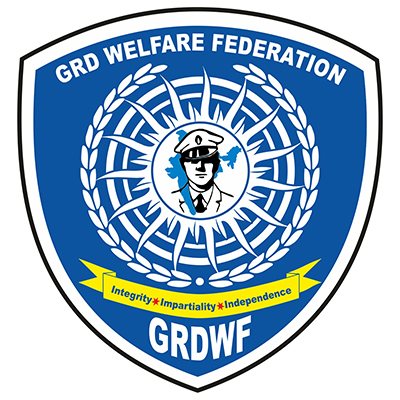ENVIRONMENT SCAN: 01-15 Oct 2021
INDEX
(e-Scan 01-15 Oct 2021)
|
S No |
Rank & Name |
Country |
Page(s)
|
|
1. |
Brig RK Bhutani (Retd)
|
CHINA (Geo-Strat, Geo-Politics & Geo-Economics) |
2-5 |
|
|
Col Siddhartha Sharma
|
WEST ASIA |
5 |
|
|
Col Siddhartha Sharma |
AFGHANISTAN |
5-6 |
|
|
Air Cmde T Chand (Retd)
|
EURASIA |
6-7 |
|
|
Gp Capt GD Sharma, VSM (Retd)
|
NUCLEAR |
7-8 |
|
|
Gp Capt GD Sharma, VSM (Retd)
|
SPACE |
8-10 |
ENVIRONMENT SCAN: 01-15 OCT 2021
CHINA (Geo-Strat, Geo-Politics & & Geo-Economics)
Brig RK Bhutani (Retd)
Taiwan Tensions Raise Fears of US-China Conflict in Asia. After sending a record number of military aircraft to harass Taiwan over China’s National Day holiday, Beijing has toned down the saber rattling but tensions remain high, with the rhetoric and reasoning behind the exercises unchanged.
China, over its National Day weekend at the beginning of the month, sent a record 149 military aircraft southwest of Taiwan in strike group formations — in international airspace but into the island’s buffer zone, prompting Taiwan to scramble its defenses. On Monday, 11 October, China announced it had carried out beach landing and assault drills in the mainland province directly opposite Taiwan.
Ma Xiaoguang, PRC’s spokesperson said that they were provoked by “Taiwan
independence forces” colluding with “external forces.”
Form the U.S. perspective,the concept of a great power rivalry with China has driven this back up the agenda. The need to stand up to China is a strong enough motivating factor that not taking this fight would also be seen as a betrayal of American national interests.
China claims Taiwan as its own,and controlling the island is a key component of Beijing’s political and military thinking. Leader Xi Jinping on the weekend again
emphasized “reunification of the nation must be realized, and will definitely be realized” —a goal made more realistic with massive improvements to China’s armed
forces over the last two decades. In a 2019 defense white paper, Beijing said it advocates “peaceful reunification of the country” — a phrase repeated by Xi over the weekend — but is also unequivocal in its goals.
In response, the U.S. has been increasing support for Taiwan and more broadly turning its focus to the Indo-Pacific region. U.S. State Department spokesman Ned Price on
Tuesday emphasized thatAmerican support for Taiwan is “rock solid,” saying “we have also been very clear that we are committed to deepening our ties with
Taiwan.”Washington’s longstanding policy has been to provide political and military support for Taiwan, while not explicitly promising to defend it from a Chinese attack.
Earlier China-US Confrontation on Taiwan. The two sides came perhaps the closest to blows in 1996, when China, irked by what it saw as increasing American support for Taiwan, decided to flex its muscle with exercises that included firing missiles into the waters some 30 kilometers (20 miles) from Taiwan’s coast ahead of Taiwan’s first popular presidential election.
The U.S. responded with its own show of force, sending two aircraft carrier groups to the region. At the time, China had no aircraft carriers and little means to threaten the American ships, and it backed down.Stung by the episode, China embarked upon a massive overhaul of its military, and 25 years later, it has significantly improved missile defenses that could easily strike back,
and equipped or built its own aircraft carriers.
The US Defense Department’s Assessment of China’s Capabilities. The U.S. Defense Department’s recent report to Congress noted that in 2000, it assessed China’s armed forces to be “a sizeable but mostly archaic military” but that today it is a rival, having already surpassed the American military in some areas including shipbuilding to the point where it now has the world’s largest navy.
According to Boyd, a co-author of IISS’s annual Military Balance assessment of global armed forces, Counting ships isn’t the best way to compare capabilities — the U.S. Navy has 11 aircraft carriers to China’s two, for example — but in the event of a conflict over Taiwan, China would be able to deploy almost the entirety of its naval forces, and also has land-based anti-ship missiles to add to the fight.
“China’s concept of operations regarding Taiwan is that if they can delay the U.S. presence in the fight, or restrict the numbers that they’re able to put into the fight because we’re able to hold their forward assets at some level of risk, they can beat the Taiwanese before the Americans show up in enough force to do something about it,” he said.
Taiwan’s own strategy is the mirror image — delaying China long enough for the U.S. and its allies to show up in force. It has significant military forces itself, and the advantage of fighting on its home turf. A recent policy paper also notes the need for asymmetric measures, which could include things like missile attacks on mainland China ammunition or fuel dumps.
Taiwan’s defense department’s assessment of China’s capabilities, presented to parliament in August, says China already has the ability to seal Taiwan’s ports and airports, but currently lacks the transport and logistical support for large-scale joint landing operations — though is improving by the day.
The US Preparations. Washington has recently acknowledged that U.S. Special Forces are on the island in a training capacity, and it has been stepping up multinational
maneuvers in the region as part of a stated commitment to a “free and open Indo-Pacific.” They included an exercise involving 17 ships from six navies — the U.S., Britain,
Japan, Netherlands, Canada and New Zealand off the Japanese island of Okinawa earlier this month.
The so-called Quad group of nations — the U.S., Australia, India and Japan — on Thursday were concluding joint exercises in the Bay of Bengal, which Japan’s Defense Ministry said showed their resolve to uphold “fundamental values such as democracy and the rule of law.”
Washington also signed a deal last month in concert with Britain to provide Australia with nuclear-powered submarines, which China said would “seriously damage regional peace and stability.”
Comments. Experts agree a direct conflict is unlikely at the moment, but as the future of self-ruled Taiwan increasingly becomes a powder keg, a mishap or miscalculation could lead to confrontation while Chinese and American ambitions are at odds. Right now, neither side’s armed forces seem fully prepared for a conflict over Taiwan, but in the end it may be a decision, led by the politicians. The US is trying to bring in the allies on a united front and there’s a growing internationalization of the Taiwan issue.
Covid-19: China Warns Against ‘Manipulation’ of New Who Virus Origin Probe. The WHO on 13 October, announced a new probe to trace the origin of the virus and released a proposed list of 25 experts to advise it on next steps.
Chinese scientist Yungui Yang of Beijing Institute of Genomics at the Chinese Academy of Sciences is a leading Chinese scientist included in the Scientific Advisory Group on the Origins of Novel Pathogens (SAGO).
Beijing has dismissed accusations that it withheld critical data during an earlier WHO probe into the origin of Covid-19 in February, saying that the investigation was politicised by the US and that the scope of the search should be widened to other countries.
Asked to comment on the new probe, Chinese foreign ministry spokesperson Zhao Lijian said it should be carried out in the “spirit of science” and shouldn’t be used as a political tool. He further added, “China will continue to support and participate in international coronavirus origins -tracing, yet opposes any form of political manipulation on the issue,”
He added that the result of the previous study on the matter should be respected.
WHO Chief Tedros Adhanom Ghebreyesus said in June that it was premature to rule out a potential link between the Covid-19 pandemic and a laboratory leak,
adding that he had asked China to be more transparent as scientists search for the origin of the coronavirus.
National health commission (NHC) vice minister Zeng Yixin had also told reporters in June that the WHO’s second planned probe had listed the hypothesis that China had violated lab regulations and leaked the virus as one of the major research objectives, and he was “very shocked” after reading the proposal.
Zeng said China cannot accept the current version of the WHO plan because it has been compromised by political manipulation and disrespects scientific facts.
Comments. The US and several other countries had expressed concerns over Chinese authorities not providing complete data to the WHO team probing the origin of the virus. Enough scientific evidences have been collected, which proved that the Chinese scientists tried to cover their tracks by reverse-engineering the viruses to make it look like they naturally arose from bats. Further, there is long history of viruses escaping from even the best run laboratories. Further, Chinese researchers were working in the minimal safety conditions of a BSL 2 laboratory, hence the lab leakage theory is also doing the rounds (For details see CENJOWS monograph titled “CHINA: FROM SPREAD OF NOVEL CORONAVIRUS TO VACCINE DIPLOMACY – AN APPRAISAL” August 2021 by the same author). India shares the need for a comprehensive and expert-led mechanism that would expeditiously investigate the origin of COVID-19 in cooperation with all stakeholders. Dr Raman Gangakhedkar, a leading Indian epidemiologist, has been named to the expert group launched by the WHO.5
WEST ASIA
Col Siddhartha Sharma
News/Developments
Israel is concerned about the re-instatement of JCPOA and a stronger Iran. The foreign minister stated in clear terms that Israel would use force if required, to stop Iranian nuclear program. The statement was made by Israel Foreign Minister in US.
Turkey has called on the international community to help the Taliban overcome Afghanistan’s humanitarian crisis. They added that this does not imply formal recognition. The statement was issued after a delegation of Taliban was received in Turkey.
Ukraine will build a factory to produce Turkish armed drones, land and agreement for which have already been reached. These drones were used earlier against pro-Russian demonstrations. The deal that might upset Kyiv’s adversary Moscow.
The UN Human Rights Council voted to end the mandate of experts investigating war crimes in Yemen in a blow to Western nations who wanted the probe to continue. Earlier suggestions of human rights violations by all groups particularly Saudi backed backed coalition was to be investigated.
Comments. Turkey is exploring diplomacy on difficult turf taking on both US and Russia on various matters. The changed dynamics post US withdrawal from Afghanistan, likely withdrawal from Iraq and reducing strength in Saudi Arabia is being treaded very carefully. In future both US and Russia can get aggressive to maintain dominance.
India has to approach Israel and Iran both in very measured terms. Both the countries are unlikely to reconcile in foreseeable future and both are important for India for imports of crucial technology, arms and fuel.
AFGHANISTAN
Col Siddhartha Sharma
News / Development.
Pakistan International Airlines (PIA) suspended flights to Kabul after what it called heavy-handed interference by Taliban authorities. Taliban had asked Pakistan to cut ticket
prices which have soared as very few flights are operating out of Kabul.
Two deadly blasts inside shia mosques shook Afghanistan. The first one which killed 72 and injured over 140 was triggered in Kunduz on 08 Oct. another blast in Kandhar killed 47 and injured 70 and was triggered on 15 Oct. Both blasts were on shia dominated 6 mosques and executed during the Friday prayers. ISIL has claimed responsibility for both.
G-20 agreed to provide aid to Afghanistan to avert humanitarian crisis. EU pledged 1 bn Euros. The nations also agreed to talk to Taliban to avert the crisis. The US concluded talks with Taliban at Doha. The talks focused on human rights of Afghani citizens and safe passage of US citizens in Afghanistan.
Adani Ports, India’s largest port operator said it will not handle cargo from Afghanistan, Pakistan and Iran following seizure of almost 3 tonnes of heroin. The consignment was said to have originated in Afghanistan was worth 2.65 billion USD. A few months earlier another consignment worth 20 mn was caught with six Iranian men of the coast of Gujrat.
Comments. Afghanistan is struggling to get any form of international recognition would face its first big challenge in maintaining peace and security against ISIL. The violence poses a threat to the Taliban that promised to establish security that the former government could not provide. It also pledged to protect ethnic and religious minorities. Can the Taliban alone take on the threat of armed groups in the country is the first big challenge. International aid would provide a big reprive to the Afghani populace. Currently they are surviving on international support as within Afghanistan there is no viable source of income presently.
The first differences with Pakistan are also emerging. In case Afghanistan is not provided international aid and the system inside Afghanistan does not change, Pakistan has much to lose.
EURASIA
Air Cmde T Chand (Retd)
Visit of Indian External Affairs Minister to Kyrgyzstan, Kazakhstan and Armenia. External Affairs Minister Dr. S. Jaishankar Kyrgyz Republic on 10-11 October. This was his first visit to the country as External Affairs Minister. He held a bilateral meeting with the Foreign Minister of Kyrgyzstan and also called on the President of Kyrgyz Republic. The EAM made two significant announcements that will take development partnership to the next level1
: (i) the formal offer of USD 200 million Line of Credit by Government of India and its acceptance by the Government of Kyrgyz Republic and
(ii) the signing of the MoU on High Impact Community Development Projects (HICDP) that will enable implementation of quick community development projects in various sectors for the benefit of common people under full grant funding by Government of India. Both countries evaluated defence exchanges and personnel-training very positively. We
agreed to continue cooperation in the fields of high-altitude training and biomedical research and appreciated the conduct of annual military exercise Khanjar despite the
constraints of Covid pandemic.
From 11-12 October, EAM visited Kazakhstan to attend the 6th Ministerial meeting of the Conference of Interaction and Confidence Building Measures in Asia (CICA) in Nur-Sultan. Kazakhstan is the current Chair and initiator of the CICA Forum. EAM also held bilateral talks with Deputy Prime Minister and Foreign Minister of Kazakhstan and called compliance with the languishing landmark 2015 nuclear deal that former President Donald Trump withdrew from three years later.
It also comes as the Biden administration, which had made rejoining the accord a priority in its first months in office, and others become increasingly pessimistic about the prospects for such negotiations even if they do resume.5
Comments. While the resolution of differences between parties i.e. Iran and P5+1 nations (China, France, Germany, Russia, the United Kingdom, and the United States appears pessimistic. One thing is certain that an early solution will help not only to Iran which is suffering the crippling economic sanctions but, it will also remove uncertainty on nuclear proliferation.
Now the situation is that Iran has increased its nuclear stockpile as well as enrichment level to more than permitted 3.67%. Even Iran’s Guardian Council has passed a new legislation recently mandating Iran to significantly rachet up its nuclear activities. It has resumed enrichment of U235 by more than 20%. In fact, it has already produced U235 enriched to 60%. It seems that, Iran to counter the sanctions has adopted strategy which is bordering on blackmail that, it is willing to revert to the old deal but, would not negotiate a new nuclear deal which even now Europe also believes should be negotiated. This view has germinated firstly, due to Iran’s threatening stance and existing example of North Korea which having become a nuclear state now least cares about the consequences. Whether Iran will come forward seems less likely now as the current President Ebrahim Raisiis hardliner.
Strategic Implications. The US-China trade war and strategic tiff has created a possibility of a new group led by China with Russia, Iran and Pakistan. The purpose could be to counter/ balance NATO/ QUAD. The Afghanistan situation has opened this possibility even more. A new cold war architecture probably has already taken shape. China and Iran have already known to entered 25 years cooperation programme. In that, China has even agreed to inject $280 billion to $400 billion in Iran by foreign direct investment into the Iranian oil, gas and etrochemical industries.
Implication for India. We too desire an early resolution of Iran’s nuclear issue. This will open possibilities of closer cooperation and reversion to our traditional historical relationship with Iran on trade which has suffered due to the US sanctions. We have invested in Chabahar port, seek participation in the Northern route to Central Asia which now appears more important due to Afghanistan situation. Iran’s concerns on Afghanistan are similar to India which is distinct to Pakistan. But this is possible only if Iran normalises its relations with US and Europe.
SPACE
Gp Capt GD Sharma, VSM (Retd)
Prime Minister Narendra Modi has launched the Indian Space Association (ISpA). It is an industry body that is made up of space and satellite companies from the Indian space domain. ISpA will act as the “collective voice of the Indian Space industry.” The members of ISpA include government bodies like Indian Space Research Organisation (ISRO), New Space India Ltd (NSIL) and Indian National Space Promotion and
Authorisation Centre (IN-SPACe) is founding members include Bharti Airtel, Larson & Toubro, Nelco (Tata Group), OneWeb, Mapmyindia, Walchandnagar Industries and Alpha Design Technologies. Other members include Godrej, Hughes India, Ananth Technology Limited, Azista-BST Aerospace Private Limited, BEL, Centum Electronics, Maxar India.6
Comments. Government of India has taken right step to open the space sector to the private sector. Private sector will open up the space to innovation to succeed in the competitive environment. While we are among the leading space faring nations, the focus of ISRO has been largely on the civil use of space and social responsibility . A comparison with the peers however indicates that we are lagging in exploitation of the space in some areas particularly the security sector.
Presently space industry generates revenue to the tune of $360 billion. In that despite India being a leading nation in space our presence is merely 2%. The reason for that is that ISRO by itself barely meets its own demands in launch of satellites or provision of services. This stems from the capacity and the budget constraints. ISRO is following ambitious Moon, Mars, and Gaganyan missions which by itself is a huge task. After opening of the space to the private sector, ISRO could then remain focused on the space exploration and strategic sectors while the private sector could take on some of other miscellaneous areas in civil, social responsibilities even chip in defence in defence.
With the push which now ISRO has received, it could transform from end service space provider to the space facilitator. A huge chunk of time and money which goes towards providing civil use services could be better used in strategic and space sciences.
.png)
The study of the past budget utilisation shows that major chunk is spent on space technology which comes expensive. Similarly, another major chunk goes in giving miscellaneous services and for INSAT. Miniscule is spent in space sciences and spaceapplications. Lot many like building the rockets, launch services, building space capsules etc can be taken up by the private sector which could spend money. United States has 10 major space players. In India too several private sector companies are raring to move ahead in the space segment
We take pride in providing cheap space launches but, this is somewhat been diluted now by the emergence of companies like Elon Musk’s SpaceX and many more who are making launching satellites more competitive. The Economic Survey 2020-21 pointed out that around 40 Indian start-ups are already working with the government. “This number is likely to increase in coming years with technology to play a big role. Hence, opening of the space to the private sector will usher a more advancement in space in India in time to come and India will emerge as major player in space service provider.
With space opening to the private sector ISRO could shed its hesitancy and engage more closely with the armed forces to meet the defence needs and help India to become a aerospace power.

